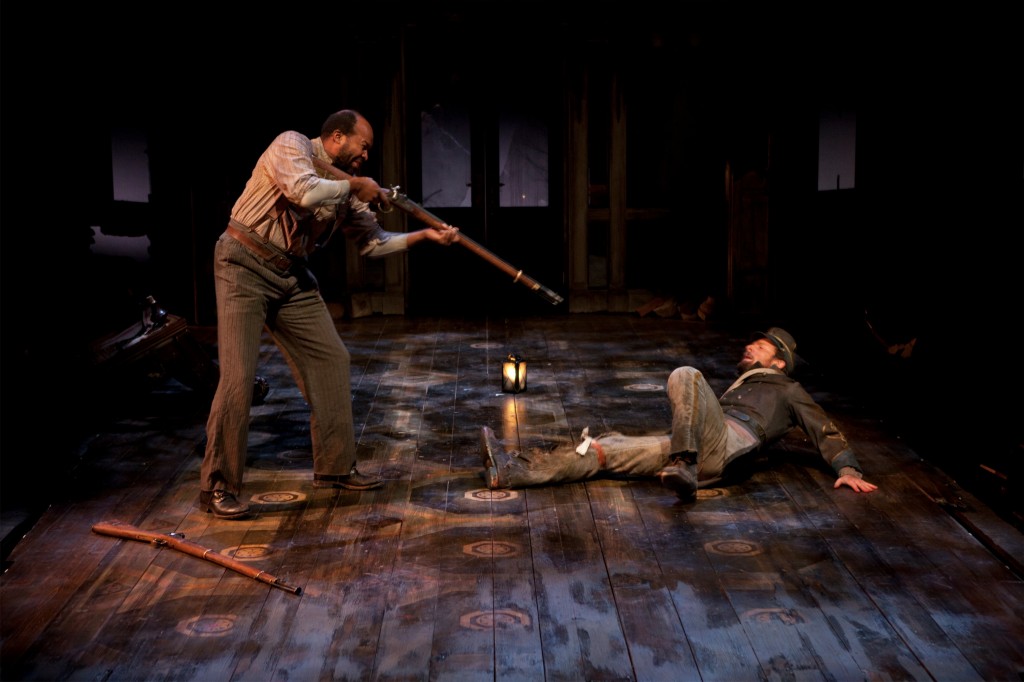Theater Review: Freedom for “The Whipping Man”
An unusual and powerful historical drama that looks at the troubled relationship between Jews and freed slaves at the end of the Civil War.
The Whipping Man by Matthew Lopez. Directed by Hana S. Sharif. With Josh Landay, Leon Addison Brown, and Che Ayende. At the Hartford Stage, Hartford, CT, through March 18.
By Tim Stobierski
The bloodiest war in American history ended just under 150 years ago, with a death-toll estimated anywhere between 600,000 and over a million. Popularly known as the war that pitted brother against brother, it was a turning point in American history that tested the mettle of a union that had been created under the premise of liberty and freedom. Set directly after the fall of the Confederacy, Matthew Lopez’s The Whipping Man is a contemporary re-imagining of this horrific war that explores the prices that were paid—both spiritual and physical—by an entire nation.
The plot is sparked by the return of a wounded, Confederate soldier, Caleb DeLeon (Josh Landay), to his war-ravaged, Richmond home. There, he finds two of his family’s former slaves—the older Simon (Leon Addison Brown), who has been keeping an eye on the ruined house in the absence of the DeLeon family, and John (Che Ayende), whose reasons for returning are enigmatic.
In the course of 90 minutes, the playwright generates an intense drama that revolves around secrets and revelations that bind the men together and tear them apart. Caleb undergoes the amputation of his wounded leg; the three men celebrate the holy Seder of Passover.
Thematically, the play draws parallels between Hebrew slaves freed from Egypt and the African slaves freed in the South—parallels that are strengthened by the fact that the end of the Civil War was concurrent with the beginning of Passover. The DeLeon family, being Jewish, passed their religion on to the slaves in their possession—Simon and John among them—so that this Seder is especially important: in every sense, as both Africans and Jews, they are free.
Andromache Chalfant’s set design resembles a haunted house, a perfect visual accompaniment to the tortured configurations of the plot. Shattered windows, charred floorboards, and mounds of broken furniture and waste beautifully evoke the destruction of the war as well as suggesting that a new world might be built out of the ruins. The gorgeous costumes designed by Linda Cho, the haunting sound effects by Broken Chord, and the stunning lighting by Marcus Doshi accent this paradox of meltdown and rebirth perfectly.
As for the performances, they range from the powerful to the somewhat confused. Leon Addison Brown’s portrayal of a worldly-wise and righteous Simon proffered plenty of subtlety and nuance—as did Che Ayende’s strong-headed, stubborn, and wise-cracking John. But Josh Landay was torn between the serious and comedic sides of Caleb, so the character jumps unconvincingly from one end of the spectrum to the other. Landay’s over-the-top facial expressions clash with the more subdued approaches of the other performers.
Despite this last objection, The Whipping Man has much to recommend it—rarely do historical dramas take such a piercing look at the troubled roots of American definitions of freedom, equality, and humanity.
Tagged: African-American, Hartford Stage, Jewish, Matthew Lopez, The Civil War


